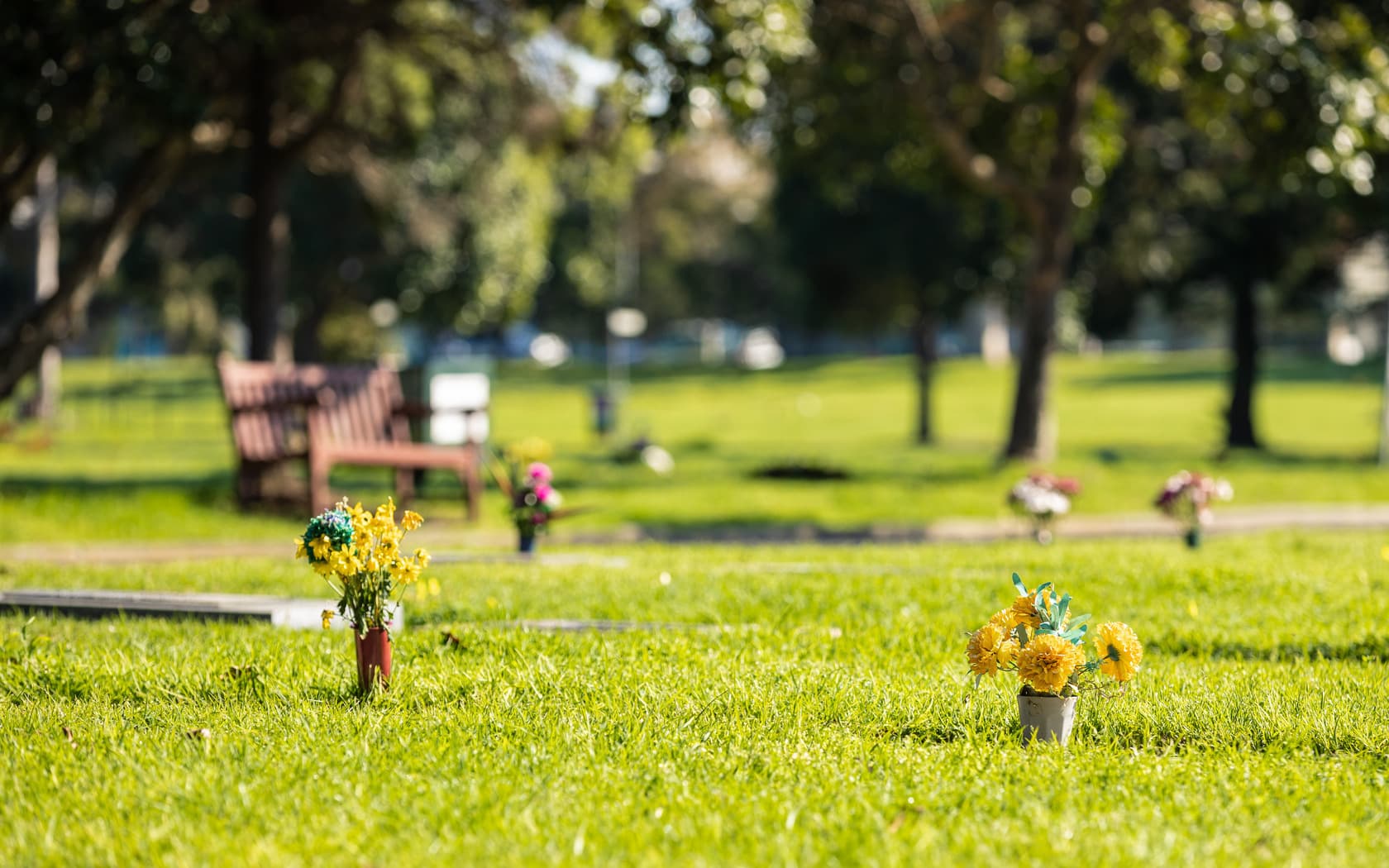What is Grave Sinking?
- 23 March 2022

Grave subsidence
If you have ever visited a loved one at a cemetery and noticed that their grave appears to have ‘sunk’, you may have been taken by surprise.
In the article below, we shed some light on the little-known process of grave subsidence, or grave sinking – and the steps our teams take at burial to reduce its effects.
Laying a loved one to rest is one of the most difficult experiences we may go through in a lifetime.
Once the burial has taken place, the journey is far from complete. Returning to your loved one’s grave site to reflect can be an important part of how you choose to honour them throughout your life. You might expect the grave site to look the same each time – and it can be distressing to discover that this is not necessarily the case.
You are not alone – grave sinking is not widely known about in the community. However, you can take comfort in the fact that our team is here to help.
Why do graves sink?
When a loved one is interred, the grave will be filled with soil that has been recently excavated. This soil will be quite loose as it has been aerated by the excavation process. Over time, however, the soil will settle, and the pockets of air will gradually be removed. This will result in a denser soil – and the surface of the grave will appear to have dropped.
The technical term for this change is grave subsidence, but it is often referred to as grave sinking. How quickly it occurs can depend on a range of factors, including weather conditions. For example, heavy rain can speed up the removal of air pockets in the soil, causing this change to occur faster than it would in drier conditions.
How long does grave sinking last?
Given the number of different conditions that affect grave sinking, it isn’t possible to provide a one-size-fits-all answer to this question. In general though, the most noticeable sinking will occur in the first few months after burial, as the soil continues to shift and settle. Beyond this time, the amount of subsidence that occurs will vary, depending on things like weather conditions, rainfall and the composition of the surrounding soil.
Can it be prevented?
Unfortunately, grave sinking can’t be prevented completely. One reason for this is that soil cannot be compacted immediately after the person has been buried without risking damage to the coffin. However, there are some steps our teams make to minimise its effects.
When person has been buried at an SMCT site, soil will be replaced in their grave up to a level well above the surface of the surrounding soil. This provides extra soil to settle during subsidence, so that the level of the grave won’t sink quite as much as it otherwise would.
The teams also consider the composition of the surrounding soil, and the soil that is being replaced back following a burial. Each location has a unique soil profile, with differing amounts of clay and other components. Selecting the optimal composition of material that is being replaced can help reduce the effects of subsidence. It can also help ensure things like ideal drainage levels, to help ensure longevity of the grave.
Extra soil is often added to graves several days after they have been filled, and then after another month, the soil is very gently compressed. By this time, most of the air pockets have already dispersed, so any danger of harming the coffin has passed. This careful compression helps the soil in the grave settle, and prevents some of the subsidence that would otherwise occur.
Unfortunately, as mentioned above, grave subsidence is an entirely natural process that can’t be controlled completely. Ongoing sinking may occur, depending on the location of the grave and the conditions. Our teams are well aware of grave sinking, and are on hand to perform ongoing maintenance where it is required.
What do I do if I’m worried about the appearance of a loved one’s grave?
While it is natural, we understand that grave sinking can be distressing. We do our best to proactively manage its effects, but adverse weather and other changing conditions can make it difficult to reach all graves before subsidence has occurred.
If the grave of a loved one – or any other grave – appears to have experienced subsidence, please contact our team, who will be able to ensure that the issue is rectified.